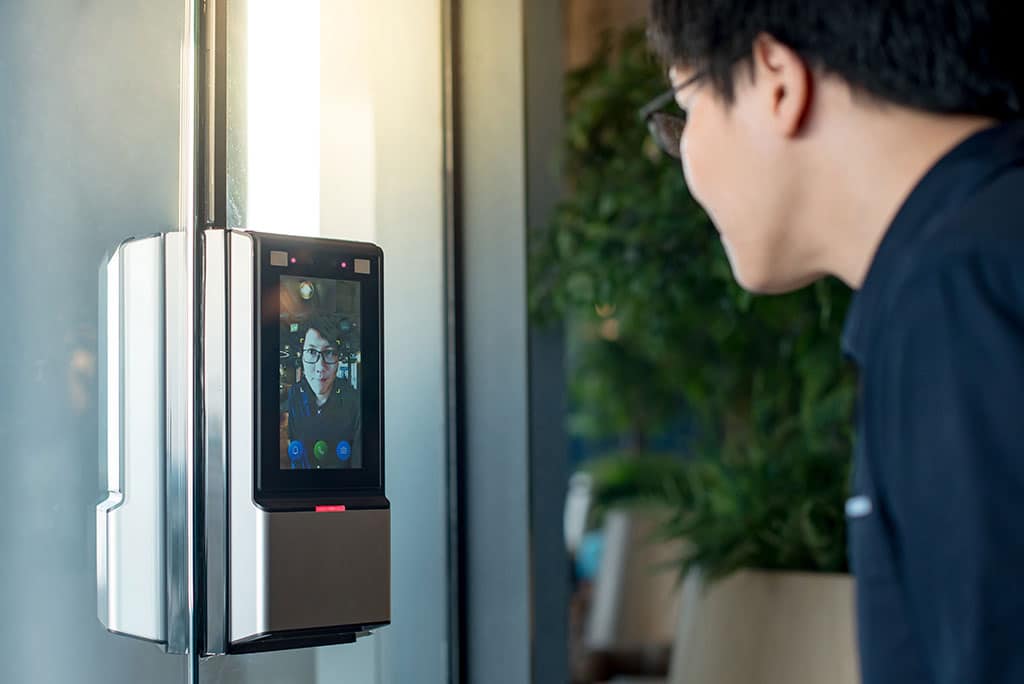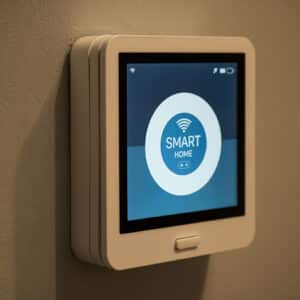While smart home technology has been at work creating upgrades for all kinds of home systems, some things remain largely unchanged. A fire alarm is still a fire alarm and uses the same kinds of sensors it has for years. Security systems may have gotten big wireless upgrades, but basic components like door sensors and cameras remain a staple.
However, the introduction of more advanced technology is slowly starting to change how alarm systems can work. Tech like AI (artificial intelligence) and other software is creating new ways for alarm installers to install and use alarms. That’s caught the attention of businesses in a number of industries, with commercial applications proving the most valuable – along with some residential applications. Here’s what’s fueling these upgrades in 2023.
Monitoring Ambient Temperatures
More complex fire and smoke alarm sensors have sensors in a number of locations throughout larger buildings – such as factories, server rooms, warehouses, schools, and more. With this large number of sensors, the risk of false alarms also increases. Older systems have trouble telling the difference between a single malfunctioning sensor and a serious problem. That can be frustrating for factories trying to decide when to shut down, or when alarms need to be investigated.
A newer approach that has gained ground in recent years is a system that monitors all ambient temperatures and compares them instead. This allows a fire alarm system to understand the context of temperature changes, and more accurately determine if a single sensor is going crazy or if there really does seem to be a serious problem in a specific area. That helps remove false alarms and save time, especially when combined with today’s more accurate heat sensors.
Video-Based Smoke Detection
Other companies are interested in fire alarm systems that can provide immediate confirmation of a fire. They may have storerooms or servers that can suffer fire damage very quickly and need the absolute best response possible. Companies like Bosch are pushing an interesting new solution: AI powered security cameras that can “see” smoke.
These cameras can watch sensitive areas (Bosch’s example is paper storage at a paper mill) and use algorithms to detect anything that looks like smoke. This allows the system to warn someone significantly faster than a heat detector or even a smoke detector would be able to pick up on the warning signs. Look for approaches like these to become more common for businesses facing higher risks.
Anomaly Detection
Anomaly detection is related to the systems that monitor ambient temperatures but are a more customizable platform that can be used for different security systems, and programmed with specific flags to watch for in their system – a.k.a., deviations from the norm. This doesn’t have to be related to fires either. It could incorporate sensors that watch for equipment failure, liquid temperatures, human activity in specific areas, the movement of specific objects, and more.
Users can program these systems to watch for danger signs while still allowing for normal deviations. Systems equipped with AI can even learn the ranges of normal activity – a classic example is the Nest Thermostat’s ability to sense people moving around a space and adjust the temperature schedule accordingly. The most advanced systems can warn of serious problems as they are developing. Right now they are most commonly found in factories and plants, but have growth potential far beyond that.
Audio Sensors
Audio sensors may not be of much use when detecting smoke or fire, but they do have lots of potential as security devices. Advanced systems are finding ways to incorporate microphones and intelligent software to listen for tell-tale signs of a problem. On something like an Amazon Echo, Alexa Guard can already identify the sound of glass breaking or a fire alarm and notify the owner. More advanced versions can monitor a variety of warning sounds (shouting, gunfire, howling dogs, etc.) and automatically send an alert to a monitoring sensor for a second look. Audio sensors also have the potential to pick up warning signs that security cameras can’t catch.
Facial Recognition in Security Systems
This is easily the most controversial new technology, and it’s already starting to appear everywhere from retail stores to home security cams. Facial recognition is possible, but owners need to decide if and how they will use it. It’s theoretically possible to keep a database of employee faces so that cameras recognize if a stranger enters certain areas – but is that an invasion of privacy? Is it worse than collecting fingerprint data for access control? What about a homeowner identifying faces from their contact list photos – would their friends feel comfortable with that? These questions are currently defining facial recognition in security.
Final Notes
New software and innovative use of intelligent technologies are quickly making alarm systems faster, more accurate, and easier to analyze for data patterns. Many of these changes are still limited to specific uses or commercial systems, but they are spreading. While AI technology and pattern recognition may make some owners cautious, these solutions can help long-standing issues with more complex alarm systems and give monitors a whole new set of tools to work with. Even homeowners are starting to enjoy basic high-tech amenities like the ability of security systems to recognize packages or alert them on their phones.






